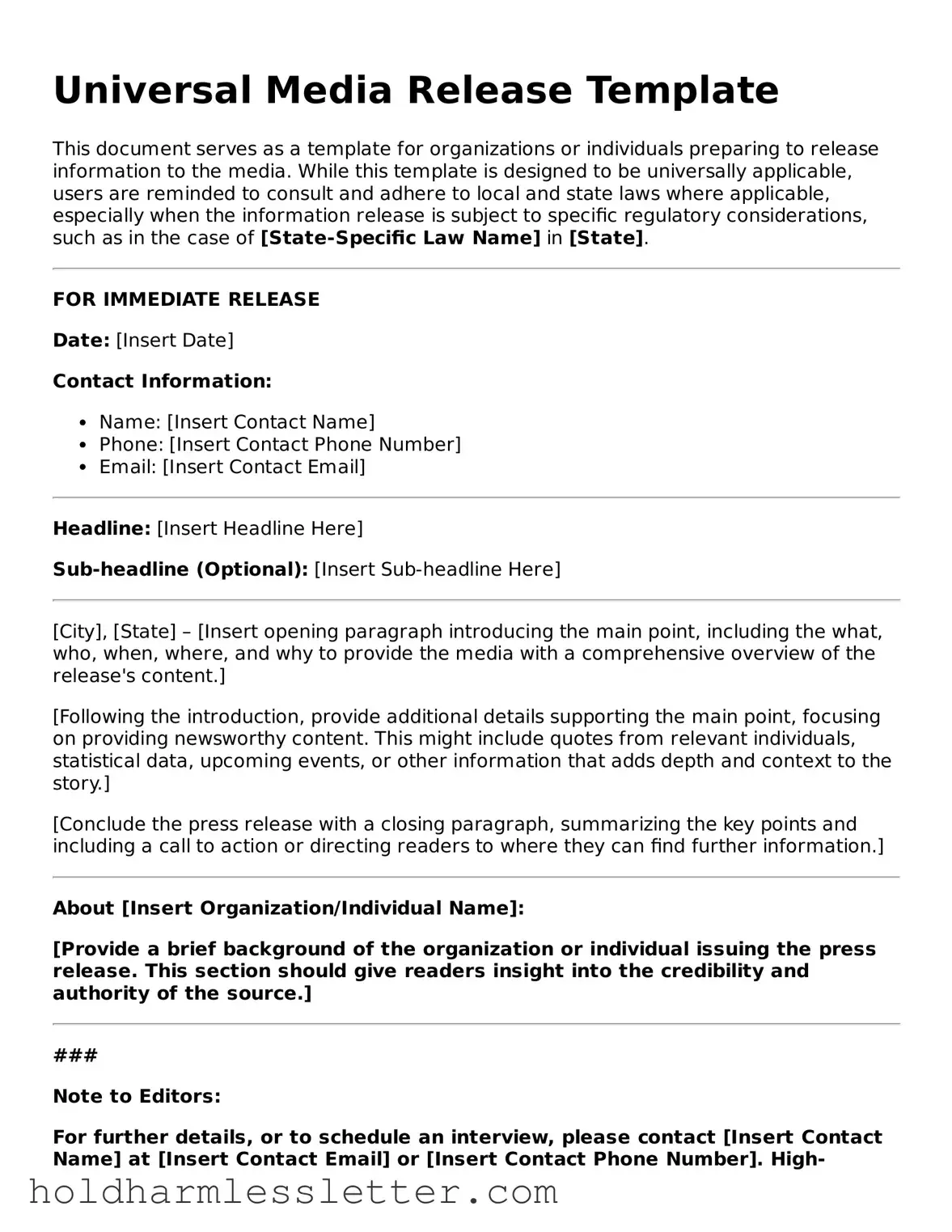Universal Media Release Template
This document serves as a template for organizations or individuals preparing to release information to the media. While this template is designed to be universally applicable, users are reminded to consult and adhere to local and state laws where applicable, especially when the information release is subject to specific regulatory considerations, such as in the case of [State-Specific Law Name] in [State].
FOR IMMEDIATE RELEASE
Date: [Insert Date]
Contact Information:
- Name: [Insert Contact Name]
- Phone: [Insert Contact Phone Number]
- Email: [Insert Contact Email]
Headline: [Insert Headline Here]
Sub-headline (Optional): [Insert Sub-headline Here]
[City], [State] – [Insert opening paragraph introducing the main point, including the what, who, when, where, and why to provide the media with a comprehensive overview of the release's content.]
[Following the introduction, provide additional details supporting the main point, focusing on providing newsworthy content. This might include quotes from relevant individuals, statistical data, upcoming events, or other information that adds depth and context to the story.]
[Conclude the press release with a closing paragraph, summarizing the key points and including a call to action or directing readers to where they can find further information.]
About [Insert Organization/Individual Name]:
[Provide a brief background of the organization or individual issuing the press release. This section should give readers insight into the credibility and authority of the source.]
###
Note to Editors:
For further details, or to schedule an interview, please contact [Insert Contact Name] at [Insert Contact Email] or [Insert Contact Phone Number]. High-resolution images and additional multimedia assets are available upon request.
